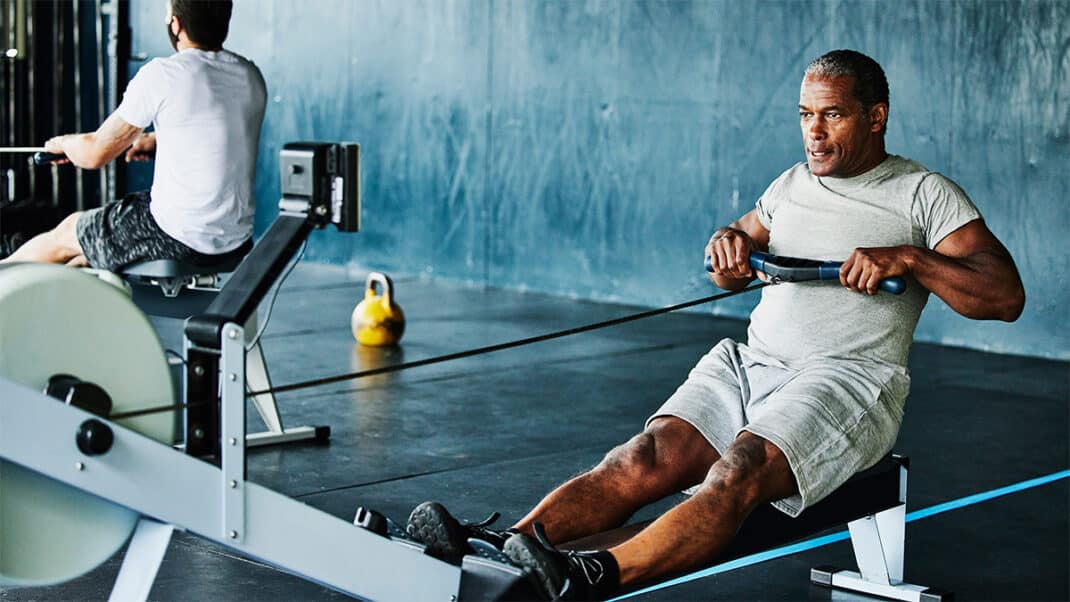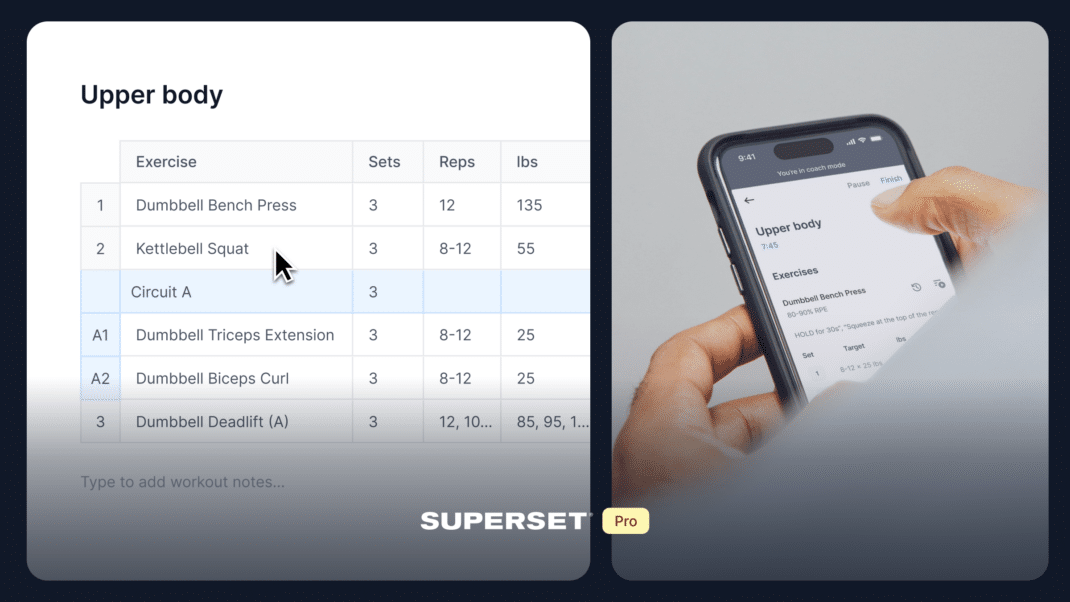The Facts About HIIT Controversy
Discover answers to three highly debated questions about high-intensity interval training.

High-intensity interval training (HIIT) involves alternating work bouts (8 seconds to 8 minutes) of high-intensity movement with low-intensity recovery periods (of variable length). HIIT has become a dependable exercise program for increasing your cardiorespiratory fitness level, effectively burning a lot of calories in a relatively short amount of time and improving metabolic markers of health (Wewege et al. 2018). However, while HIIT is popular, there is some controversy surrounding it. Len Kravitz, PhD, professor and program coordinator of exercise science at the University of New Mexico, looks at HIIT research to bring clarity to three current controversies. The method used to resolve these debates is the “proof-of-concept” approach, which means he has chosen the best study to answer the disputed question on HIIT.
HIIT Controversy #1: Is HIIT Safe for Persons With Cardiovascular Disease?
Wewege, M.A., et al. 2018. High-intensity interval training for patients with cardiovascular disease—is it safe? A systematic review. Journal of the American Heart Association, 7 (21), e009305.
Introduction
Wewege et al. (2018) note that cardiovascular disease (CVD) includes both heart failure and coronary heart disease. People with CVD have traditionally completed low- to moderate-intensity continuous aerobic training (MICT) in cardiac rehabilitation programs. Although HIIT has been utilized in CVD populations, there have been some safety concerns about the effectiveness of using it with this population.
The Study
Wewege et al. (2018) reviewed whether HIIT is safe for persons with either heart failure or coronary heart disease. The review included 23 studies that compared HIIT with MICT. HIIT programs used high-intensity work bouts lasting up to 4 minutes and intensities of ≥85% of heart rate peak, ≥80% of peak aerobic capacity or a rating of perceived exertion ≥15 (on a 6–20 RPE scale). The MICT programs included continuous aerobic exercise at 60%–75% of HR peak, 50%–65% of peak aerobic capacity or a rating of 12–15 on the RPE scale.
Results and Take-Home Message
There was only one major cardiovascular-related event among HIIT participants in the studies. Wewege et al. calculated that this was one event per 11,333 training hours, a very low incidence. After reviewing the data, the researchers concluded that the “rewards” of applying HIIT with CVD patients are reasonably compelling, and the accumulated evidence suggests it is an acceptable alternative to traditional MICT. The researchers found no evidence to suggest that HIIT is inherently unsafe for any specific CVD patient characteristics (including older age).
For persons with cardiovascular disease, it’s fine to do HIIT at a level suitable for your health status. Wewege and colleagues recommend that you monitor your physiological responses during the session (via heart rate and RPE) and immediately afterward (via blood pressure).
See also: Body-Weight HIIT Exercise
HIIT Controversy #2: Does HIIT Impair Mitochondrial Function and Decrease Glucose Tolerance?
Flockhart, M., et al. 2021. Excessive exercise training causes mitochondrial functional impairment and decreases glucose tolerance in healthy volunteers. Cell Metabolism, 33 (5), 957–70.
Introduction
Flockhart and colleagues (2021) knew that cardiovascular exercise positively affects metabolic health by improving glucose regulation and increasing oxidative capacity. Mitochondria, they explained, are small organelles—found within most body cells—that are primary sources of ATP synthesis, providing necessary fuel for exercise and activities of daily living.
Other research has shown that HIIT training can increase the content of mitochondria (Jacobs et al. 2013) and boost insulin sensitivity (Richards et al. 2010), improving glucose regulation and helping to prevent type 2 diabetes. The controversy lies in where the upper limit of these positive benefits occurs; determining this threshold was a primary purpose of Flockhart et al.’s (2021) 4-week HIIT study.
The Study
Flockhart and colleagues (2021) recruited 11 physically active adults. Participants were not doing HIIT in their exercise training and not exercising more than 5 hours a week. All study workout trials (completed on a cycle ergometer) were spread throughout the week. At the end of each week’s trials, the researchers collected biopsy samples of the vastus lateralis muscle of the thigh (for mitochondrial analysis) and did an oral glucose tolerance test. Participants were instructed to perform all HIIT sessions at their highest possible average power output during all work intervals. Each workout began with a 10-minute warmup.
Weekly workouts progressed as follows:
Week 1 (Light Training): Two Sessions
- both HIIT workouts: five bouts of 4 minutes of work performed at 95% of VO2max, alternating with 3 minutes of passive rest
Week 2 (Moderate Training): Three Sessions
- two HIIT workouts: five bouts of 8 minutes of work performed at 90% of VO2max, alternating with 3 minutes of passive rest
- one HIIT workout: five bouts of 4 minutes of work performed at 95% of VO2max, alternating with 3 minutes of passive rest
Week 3 (Excessive Training): Five Sessions
- three HIIT workouts: five bouts of 8 minutes of work performed at 90% of VO2max, alternating with 3 minutes of passive rest
- two HIIT workouts: five bouts of 4 minutes of work performed at 95% of VO2max, alternating with 3 minutes of passive rest
Week 4 (Recovery): Four Sessions
- three HIIT workouts: three bouts of 8 minutes of work performed at 90% of VO2max, alternating with 3 minutes of passive rest
- one HIIT workout: three bouts of 4 minutes of work performed at 95% of VO2max, alternating with 3 minutes of passive rest
Results and Take-Home Message
Results of this study showed that following Week 3 (Excessive Training) there was a striking reduction in mitochondrial function, and this coincided with a negative disturbance in glucose tolerance (the body’s ability to absorb and use glucose) and insulin secretion. These data confirm that extreme amounts of HIIT (i.e., five sessions per week at an all-out intensity) are clearly associated with negative physiological outcomes.
Thus, HIIT’s benefits for cardiometabolic health are best achieved by exercising at moderate to high intensities relative to the client’s fitness level. HIIT performed at extreme levels of training is contraindicated for meaningful health benefits to occur.
HIIT Controversy #3: Is HIIT the Only Cardiovascular Exercise a Person Needs to Do?
Proof-of-Concept HIIT Research Study
Langan, S.P. & Grosicki, G.J. 2021. Exercise is medicine . . . and the dose matters. Frontiers in Physiology, 12 (660818).
Introduction
As HIIT has grown more popular, some people choose not to do any other forms of cardiovascular training, such as MICT; lactate threshold training; or slow, long-distance endurance exercise. However, from a physiological perspective, Langan & Grosicki (2021) report that there are some physiological shortcomings to doing only HIIT workouts.
The Study
Langan & Grosicki (2021) compared the physiological adaptations of HIIT and sprint interval training (SIT) with MICT to identify distinctive physiological differences.
The researchers acknowledge that HIIT/SIT and MICT have many overlapping benefits—particularly when it comes to improving cardiorespiratory fitness. Compared with HIIT, however, low- to moderate-intensity training (40%–70% of heart rate reserve) provides a more potent stimulus for peripheral physiological adaptation, which specifically enhances maximal mitochondrial function. The lower metabolic byproduct accumulation during low- to moderate-intensity exercise allows for substantially greater exercise duration and reliance on oxidative energy production and mitochondria-derived ATP. This leads to a bigger improvement in exercise economy—meaning that people become more fuel efficient and can maintain steady-state exercise intensities for longer.
Take-Home Message
If the desired outcome is better health, it’s wise to adopt a balanced approach that varies intensity by including HIIT and MICT. This is likely to optimize all of the cardiometabolic benefits of training.
Final Thoughts
The idea of varying the exercise stimulus with HIIT and MICT appears to be an important take-home message. Pushing exercise intensities to the extreme will likely result in some negative physiological outcomes.
References
Jacobs, R.A., et al. 2013. Improvements in exercise performance with high-intensity interval training coincide with an increase in skeletal muscle mitochondrial content and function. Journal of Applied Physiology, 115 (6), 785–93.
Richards, J.C., et al. 2010. Short-term sprint interval training increases insulin sensitivity in healthy adults but does not affect the thermogenic response to beta-adrenergic stimulation. Journal of Physiology, 588 (15), 2961–72.





